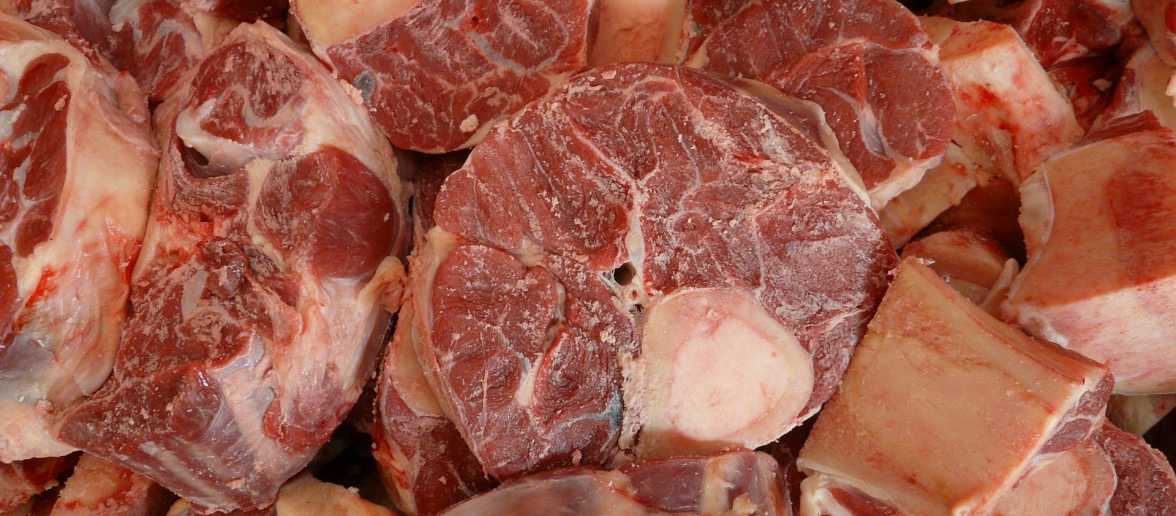
The Beef with Beef
Beef often gets a pretty hard time when it comes to its environmental impact. In this blog, I take a look at why that is, and what we could do about it.
First things first
Before we get into it, let’s begin with an important preamble: 1) Personally, I think beef’s delicious 2) I’m not trying to take it away from you.
As the summer draws to a close and the smell of BBQ still hangs in the air, the idea of a beefless world is for many of us just too terrible to contemplate. But as we’ll see, beef’s savoury taste also presents us with some rather unsavoury problems.
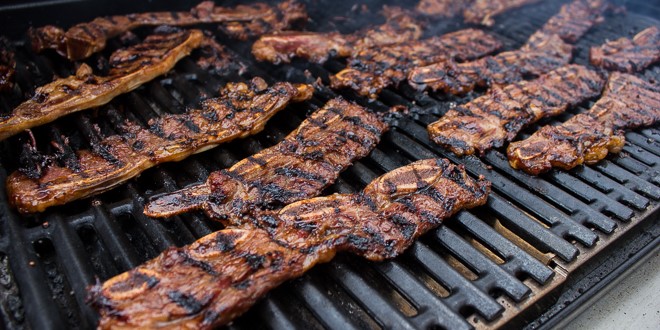
Beef is great, just not for the environment
Canadians love beef. While consumption has been steadily falling since the 1980s, we still eat a lot of it: on average we consume 24 kilograms per person per year, second only to chicken.
But producing all that beef takes a toll. A U.S. study found that on a per-calorie basis, beef production requires 11 times the water and 28 times the land compared to an average of other livestock categories. And the study’s lead author expects that the results would be pretty similar for Canada. (A major Canadian research project is looking into this now.)
However, for now let’s put aside these ‘other’ types of environmental impacts (as well as potential health and ethical concerns), and focus on GHG emissions.
GHGeez
Beef is a huge contributor to global emissions. About three quarters of it comes in the form of methane, a short-lived but potent greenhouse gas 25 times as powerful as CO2. Because cattle are ruminant animals, the way they break down their food causes them to emit methane. It comes out of both ends, but burps apparently get most of the blame.

The odd bovine burp wouldn’t be such a big deal, but with over 5 million beef cattle in Canada, we’re talking about a lot of them. All in, GHG emissions from beef production in Canada total about 27 megatonnes per year. That’s 3.6% of Canada’s total emissions, over a third of our agricultural emissions, and nearly three quarters of our emissions from animal production.
Other types of livestock don’t even come close. The same study we noted above found that beef had five times the emissions per calorie of other meats and animal products. For context, that’s 10 to 40 times the emissions of most vegetables and grains.
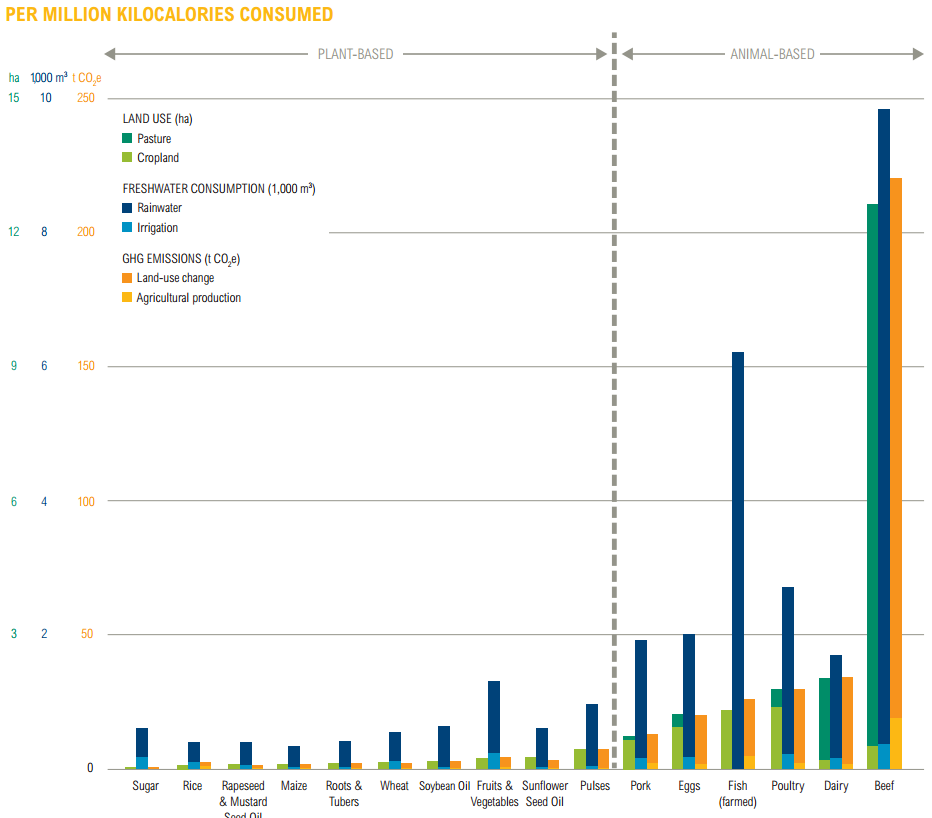
And sure, there are fancy organic/pasture-raised/grain-fed/spa-pampered varieties of beef with lower emissions. But these are only a small share of the total market (at least for now). Most of the beef that Canadians eat comes with a significant emissions footprint.
Addressing beef’s GHG hoofprint
If Canada is serious about hitting its national emission targets, we need to be looking for mitigation opportunities across all sectors, especially high-emitting ones like beef production. This doesn’t mean we have to cut beef out entirely (phew!), just that we need to try to reduce the emissions that come with it.
One way to do so is to eat less of it, something that other countries are already encouraging. The Dutch government recently recommended that citizens limit meat in their diet, especially red meat. And even China is on board, recently issuing guidelines that encourage citizens to cut their meat consumption in half, a move that’s expected to have significant climate benefits.
There are also some cultural undercurrents supporting this type of shift. World Meat Free Day is now a thing, as is Meatless Mondays. Veggies are moving to the “centre of the plate” in some restaurants, and veganism is on the rise (this author is in fact a ‘weekday vegan,’ which isn’t at all as difficult—or joyless—as it might sound).
But despite all this, our meat eating habits have been slow to change, and emissions from our beef consumption, while down since the early 80s, are still high. Luckily, there are some ecofiscal solutions that could help.
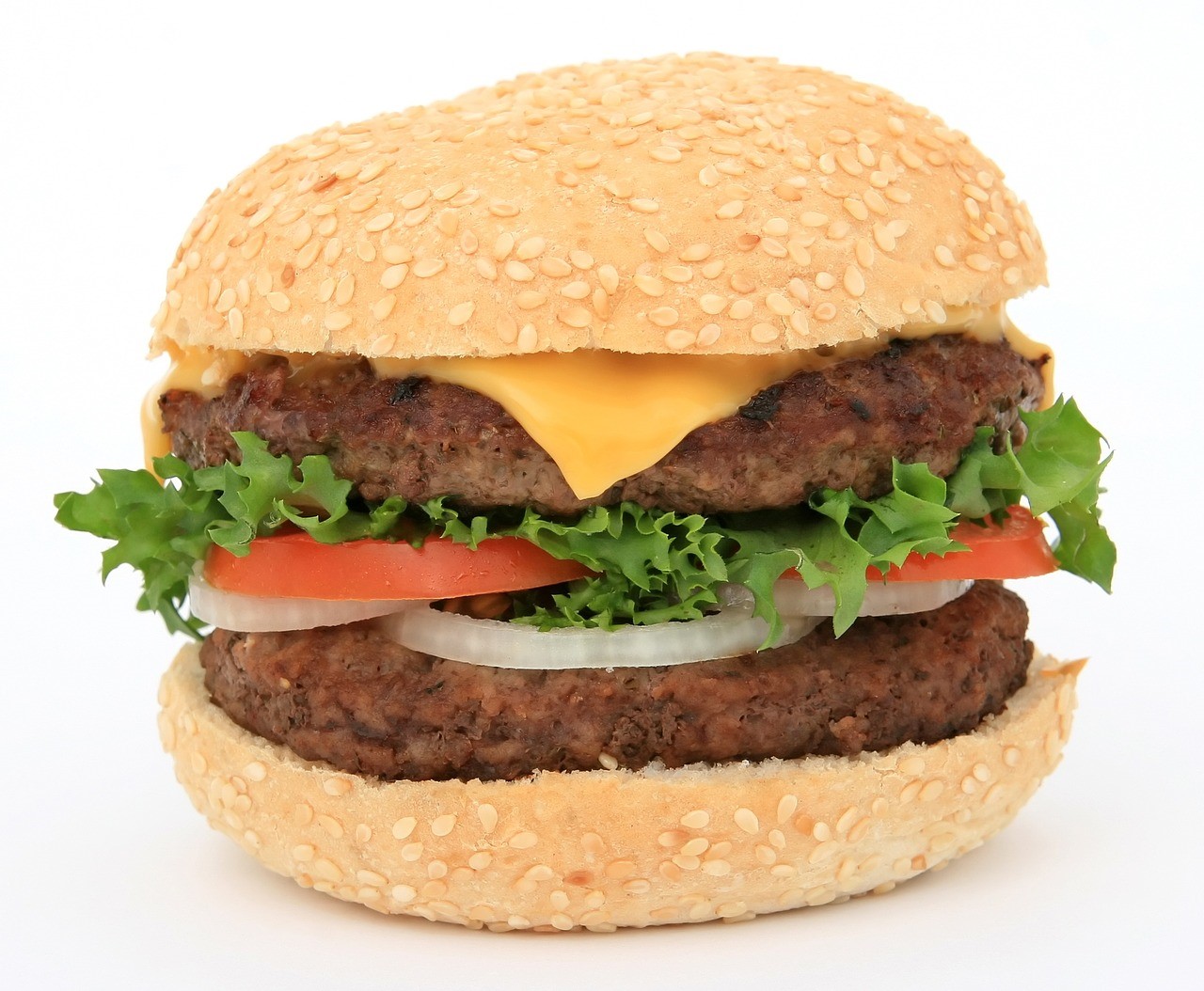
Ecofiscal solutions
People respond to prices; it’s the law of demand. When the cost of something rises, we consume less of it. This has already been shown to be true of beef in Canada: when prices went up last year due to supply issues, Canadians reduced consumption by eating less and by shifting their consumption to other types of meat.
Making the price of beef reflect its environmental cost is sensible ecofiscal policy. Ideally, both GHG emissions and the other environmental impacts from beef would be priced in, but let’s stay focused on GHG emissions. Here are some ecofiscal ideas for making the price of beef reflect its climate cost:
Carbon pricing as panacea?
If you’re looking to add GHG cost to the price of a good or service’s emissions, a carbon tax or a cap-and-trade system is a great way to do it, as we’ve argued previously. The tricky thing is that emissions from livestock don’t really lend themselves to carbon pricing very well. The sources are too diffuse to directly monitor (and it doesn’t sound like a very pleasant job anyway). As a result, livestock emissions are typically exempted from carbon pricing schemes.
Learn more about carbon pricingOffsets riding to the rescue?
A compromise solution could be to use carbon offsets. Cattle farms could take steps to lower their emissions, get their reductions verified, and then sell them as mitigation offsets. Some carbon pricing schemes in Canada and the U.S. already support offsets. Offsetting can be a useful way to extend carbon pricing’s emissions coverage, but when it comes to reducing beef’s emissions it has its limits—because offsetting only affects the supply side, there’s no incentive for consumers to reduce their demand-side emissions.
All you need is levy
An alternative could be to bring in a climate levy on beef, where for every kilogram sold, a small amount would be added to the price to account for the additional GHG emissions that beef generates compared to other types of meat. (Ideally you’d have a specific levy for all types of meat, but a focus on beef makes sense because of its much-larger emissions.)
The levy would be applied at the point of wholesale. Imported beef would be subject to it, but beef destined for export would be exempted, which would help avoid competitiveness impacts. And crucially, Canadian farmers would receive a partial rebate from the levy if they could demonstrate that their emissions intensity was below the industry average.
By pricing a high-emitting portion of Canada’s GHG inventory that carbon pricing doesn’t touch, a beef levy would be a valuable complement to carbon pricing. It would help to drive cost-effective emissions reductions. It would help reduce some of beef’s other environmental impacts. And it would raise revenues that could be used for any number of purposes, including compensating the farmers that end up negatively impacted (you could even make any help conditional on their instituting Beneficial Management Practices (BMPs), as discussed here).
Here’s how a beef levy would be put into action:
- First, the average emissions to produce a kilogram of beef in Canada would be determined (recent estimates have put it at around 17 kg CO2e/kg beef at the low end and around 22 kg CO2e/kg beef at the high end; both figures are for carcass weight).
- Second, the average emissions of other types of meat would be subtracted, to reflect only the additional emissions from beef (as noted above, other meats have on average about a fifth of beef’s emissions).
- Finally, to produce a per-kilogram rate for the levy, beef’s average emissions intensity would be multiplied by the going carbon price (BC’s $30/tonne carbon tax provides a good reference point).
Using the figures above, a back-of-the-envelope estimate puts the value of a beef levy at somewhere between 40 and 50 cents/kilogram. Based on my rather unscientific research of beef prices (snapping a pic at my local grocer), this would mean a price increase of somewhere between 3 and 4%.
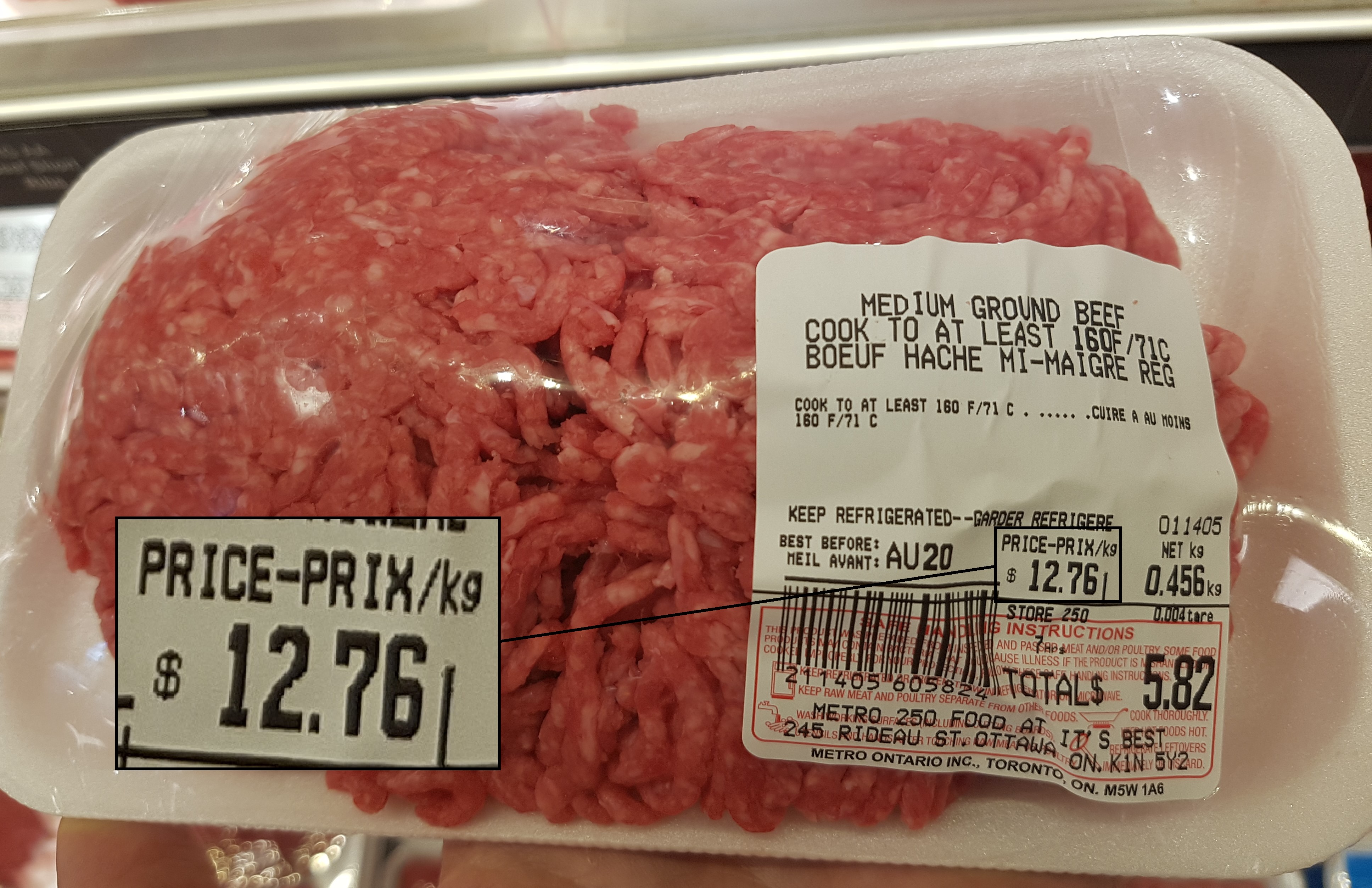
But while its effect on prices would be small, a beef levy could have powerful effects on incentives. On the demand side, a slight increase in the price of beef would encourage consumers to eat less of it by buying other types of meat, or more vegetables and grains. On the supply side, farmers would work to lower their operations’ emissions intensity in order to qualify for the rebate, which would help to reinforce some positive existing industry trends (between 1981 and 2011 the GHG intensity of beef production in Canada fell 15% as a result of industry efforts to develop technologies in genetics, nutrition, reproductive physiology, and herd management). As a result of these effects, emissions from beef would fall.
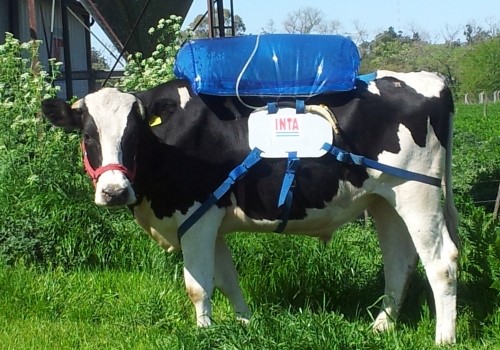
We know, a beef levy leaves a bad taste
We’re fully aware that a beef levy would face strong and inevitable pushback from the livestock sector, libertarians, and the beef-loving public. But if Canada is serious about lowering its emissions then we need to consider all our options, and a beef levy makes an awful lot of sense: beef is a major source of emissions, and putting a climate levy on it would create powerful incentives for consumers to consume less and for producers to produce it better.
Enthusing about a beef levy probably isn’t a great way to make friends at a backyard BBQ, and it will probably be some time before a policy as unappetizing as a beef levy has its day. But don’t be surprised if you hear more about this idea in Canada and abroad in the coming years as we continue to beef up our climate policies.
Learn more about carbon pricing



19 comments
Well done! Danemark is also considering a tax on meat to reduce GHG.
Your kidding right?. Did anyone ever explain that many of those acres used for beef production are basically no good for anything else. Many of these acres produce small amounts of forage. It’s called ranching, taking marginal land and harvesting it with beef cattle.
Hi Ron. You’re totally right that it can make sense to produce cattle on marginal lands that are ill-suited to growing crops. But this is a minority of beef production in Canada. The operations that produce cattle on marginal land would have lower emissions, and would qualify for the rebate I discuss above, while those that are using viable agricultural land likely wouldn’t.
Thank you for your thoughtful ideas. I do have one issue.
The reason we eat meat of any kind is not for the calories but is for the protein and beef is protein dense about 24 grams per 85 grams. Vegetable, legumes and grains are much less protein dense; about 1/3 as much.
The issues regarding ghgs comes more from the energy intensity of modern farming where we cultivate crops and feed them to animals and then harvest the protein secondarily. I suspect this would lead to a much higher contribution of GHG than that from the methane gases produced by bovine digestion especially when added together. Especially where there is a feeder lot finishing of cattle.
This becomes complicated in a system such as in Alberta for example where much of the beef is raised on land unsuited for the growth of crops other than that of the grasses native to the area.
Any carbon levy would have to be undertaken with these kinds of considerations in mind.
Hi Tom. You’re right that the calculation of lifecycle emissions would need to account for a lot of complexities. The two figures for emissions-intensity I cite above have taken a life cycle view of combined emissions from energy, enteric fermentation and land use. But the breakdown you describe would be crucial for figuring out who would qualify for the rebates and why.
“Moral suasion can only go so far when you’re up against something as culturally ingrained as a burger. And so making the price of beef reflect its environmental cost is sensible ecofiscal policy.”
Yes, yes, yes.
Love this article. Hilarious, informative and persuasive.
Agreed- however it opens up the dairy industry as well. Should we levy milk and dairy products too? Many argue we do not need cow’s milk in our diet, hence an argument for milk in children’s diet is weak. Other alternatives are available or can be augmented to be as good or better than milk instead.
Dear Jason,
Thanks for a great blog post. A levy on beef is a great idea. You make a good argument for why a levy on beef might be worth considering as opposed to a levy on all meat, eggs, fish and dairy, because of the much greater impact of beef on greenhouse gas emissions.
I’d like to point out that although the levy on beef works out to around 45 cents per kilogram (I’m using the middle of the 40 to 50 cents/kilo range) when the carbon price is $30 per tonne, it will rise substantially as the carbon price rises. In order to meet our climate targets, that price needs to ramp up quickly, say by $10 per year, so that we reach $150/tonne by 2030. When the carbon price is at $150/tonne, the levy would be $1.35 per kilogram, which is about 10% higher than it is today. It is hoped that the fact that there is a levy raises awareness of the downsides of beef consumption, and together with the higher price, will reduce beef consumption.
As you stated, there are more than just greenhouse gas emission reasons to reduce animal product consumption. There are also food safety, health and humanitarian reasons to reduce animal product consumption, so a levy on all animal products might be worth considering. We can prevent a lot of human suffering and chronic diseases by adopting a whole-foods, plant-based diet, and I think a multi-prong approach is a good way to help people make the transition.
Hi Caterina. Indeed, to drive mitigation cost-effectively, the beef levy would need to move in line with carbon prices which will need to increase substantially in the coming years. Getting a relatively low-cost beef levy in place now and ratcheting it up is probably better than suddenly bringing in a higher-cost one later. This logic applies to other animal products too, as you point out.
I’d like to comment on the assertion that the reason we eat beef is because of the protein. The following is a succinct paragraph on protein sources written by Teresa Ford, a clinical researcher with a Nutrional Science degree. She writes:
“Walter Willett, Chair of Harvard’s Nutrition department, stated plant protein is preferable to animal protein because food is a package deal. Plant protein is associated with lower rates of heart disease and lower cholesterol. All plants naturally contain protein and come packaged with fiber and phytonutrients.
Animal protein is associated with diabetes, hypertension, heart disease and cancer. All animal products naturally contain protein and come packaged with saturated fat and cholesterol (no fibre, minimal phytonutrients). On average, people who eat a plant-based diet have significantly higher levels of protein plasma in their blood. In fact, vegetarians and vegans get 70% more protein than the required daily intake. Experts today agree that 40 to 60 grams of protein per day is plenty. And there is no need to combine our plant based foods in a certain way due to amino acid content.
Even if you are not a fan of beans or lentils, you can still get lots of protein from nuts, seeds and whole grains.
To review evidence behind recommendations to focus on plant proteins, check out the book Proteinaholic by Garth Davis, MD, […] videos from nutritionfacts.org, or Dr. Willett’s article (Skerrett PJ, Willett WC. Essentials of healthy eating: a guide. J Midwifery Womens Health. 2010 Nov-Dec;55(6):492-501).”
Jason and others;
Beware of the secondary and tertiary impacts of broad scale policy proposals of the kind you are suggesting. If we decide collectively to stop eating meat, there will be impacts that few people have thought about. South of Calgary, along highway 22, through the foothills of the Rockies, is one of the most spectacular, and natural landscapes on the planet. It has been kept that way by the old traditional ranch families that settled there in the 1800’s. They have refused to sell land to developers. There is not a single sub-division in this area, south of Black Diamond. If you remove the reason for these people to stay in ranching, they will not all donate their land to the Nature Conservancy. It will be farmed, or sub-divided, as people look for alternative sources of income.
We face huge problems with climate change, but we need to think this through. And make sure we have the numbers right. Wrap your head around this. There is work that suggests that beef from feed lot cattle actually have a lower carbon cost than pasture fed cattle, since, with higher gains, feed lot cattle are alive, and farting methane, for a much shorter period.
A completely counter-intuitive result.
best regards
bob
In a follow-up to Bob’s statement:
Let’s not forget that prior to the 1900’s western Canada and the western United States faced annual plagues of locusts. Some were huge, with swarms in western Canada alone estimated to be about the size of California! The locusts’ breeding areas were in the foothills of the Rockies, where they fed on certain grasses, which also were the same grasses the newly-introduced beef-cattle desired. The last swarm of note in the west was in 1903. Reducing cattle production now could well mean the return of locust plagues, destroying commercial agricultural crops.
On a different note Jason, you seem to blame cattle on the production of methane, yet there were millions of Bison in the west prior to the arrival of Europeans. These emitted methane from both ends as well, yet these didn’t have an effect on the environment? Please explain.
Hi Randy.
You’re right that bison probably had a huge carbon footprint as well in their time. But GHG emissions weren’t an issue then. They are now, and cattle are a significant driver. Hence our focus on cattle.
Re: pastureland, see my next comment.
Jason
Before we throw the baby out with the bathwater it would be prudent to consider the effects of carbon sequestration that takes place in the soil by the proper grazing management of forages. some studies are showing that far more carbon is sequestered back into the soil than is emitted by the grazing animals( and they include sheep, goats, deer etc. The carbon cycle is complex and to target the meat industry, without a complete assessment of the pros and cons would be short sighted at best. A complete understanding of the natural cycles ( eg. carbon, nutrient, water and mineral) needs to be determined before taxing an industry out of existence. Most consumers today are several generations removed from primary food production and seem to be forming opinions based on information from social media that may not be taking into account the ramifications of removing a part of the food production system. An holistic approach to the management of the natural systems involved would be more sensible.
Hi Don. I fully agree that carbon sequestration should be taken into account, and on the need for holistic management of natural systems.
But a large portion of cattle in Canada are raised on feed, not pasture land. And even for those that do graze, it’s fair to ask whether methane-intensive cattle are a better choice than other types of animals. To answer these questions would require the complete assessment that you call for.
“Enthusing about a beef levy probably isn’t a great way to make friends at a backyard BBQ, and it will probably be some time before a policy as unappetizing as a beef levy has its day.”
Poor and middle class Canadians already pay half or more of their incomes in government levies and taxes of one kind or another. Considerably more if you include things like monopoly pricing on electricity and natural gas.
Leaving aside anything else, how long do you think a government party will survive in power if they propose to tax food at the kind of level you are talking about here? I think hours, myself.
Then there is the larger economic issue.
Given the recent moves against the EPA taken by the Trump administration, namely eliminating the long-term mileage regulations, and threatening to remove California’s state-specific emissions regulations, it seems the Americans are moving away from restrictive regulation. You propose Canadians compete with the USA while saddled with ever higher impediments on their competitiveness. What will happen is Canadian companies will lose the competition, and our already burdened economy will follow the trail being blazed by Venezuela.
What’s your plan for dealing with that?
My plan is right there in the blog: “Imported beef would be subject to it, but beef destined for export would be exempted, which would help avoid competitiveness impacts.”
But on the more general question of whether Canada should continue to pursue meaningful environmental policy (e.g. carbon pricing) when the US is currently going the other way, I would say that the costs of reversing course would exceed the benefits. Political currents and cycles change, and while our environmental policies should be conscious of them, they shouldn’t be hostage to them.
[…] outsized impact on the environment, the carbon tax advocates at Canada’s Ecofiscal Commission are now recommending a beef tax of up to 50¢/kg. At current prices, that would add approximately four percent to the […]
Albert Einstein (Nobel prize 1921): “Nothing will benefit human health and increase chances for survival of life on Earth as much as the evolution to a vegetarian diet.”
Comments are closed.